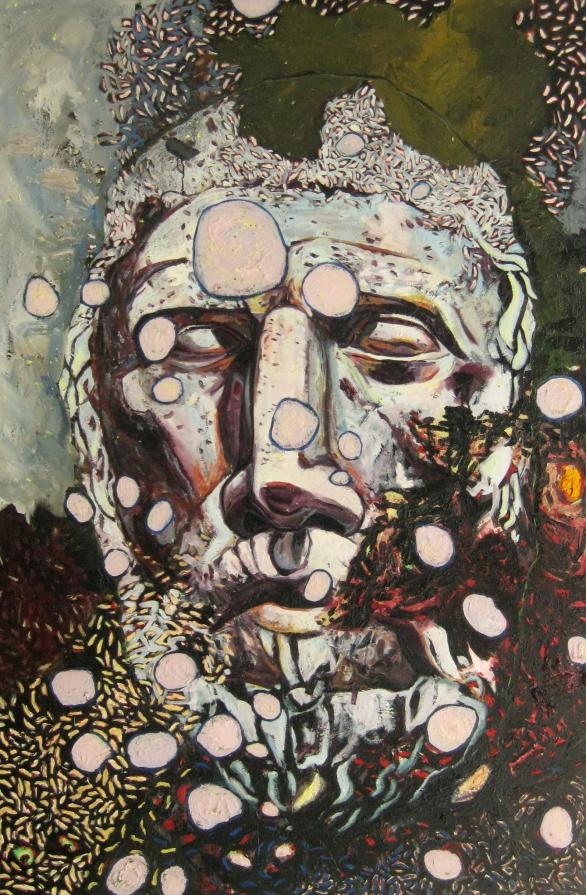Marble and Time : A Complete History of Civilization (Abbr.)
The ways in which we define ourselves through imagery and objects is fascinating to me. As I walk through museums, I am struck by the separation that I feel with the objects. Even though the rooms are categorized into floors and rooms and display cases and didactics, all of the artefacts tend to flow with one another. This feeling is accentuated more when I get my pictures home or when I remember my experience afterwards.
This division between the meaning of the object or image and the meaning of the presentation is the basis for my current body of work. The work presented on this disk is from the Royal Ontario Museum’s collections, where it is then fractured, combined and abstracted.
The abstraction serves three purposes. Firstly, it ruptures the picture which makes the painting self-referential. This self-reference illustrates the tension between the object and the artist's personal experience. Secondly, the abstraction mirrors real life experience. The origin of the abstraction might be a glare on the lens, the structure of the display cases or reflections in the glass. This takes the attention away from the object and instead focuses attention on the artifice of its surroundings. Thirdly, it frees the objects from their conceptually limiting, modernist cases. In a supposedly post-colonial, post-political and historical world, non-hierarchal and anarchic imagery offer reasonable alternatives.













Comments 0
Say something